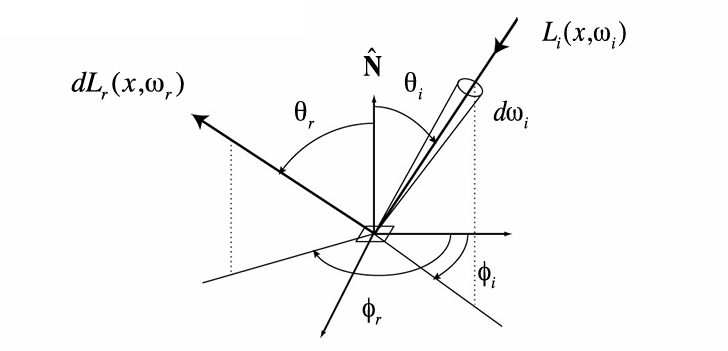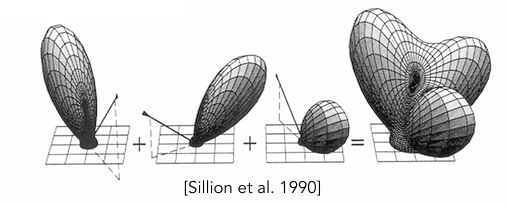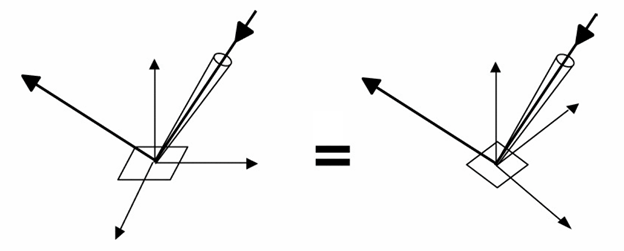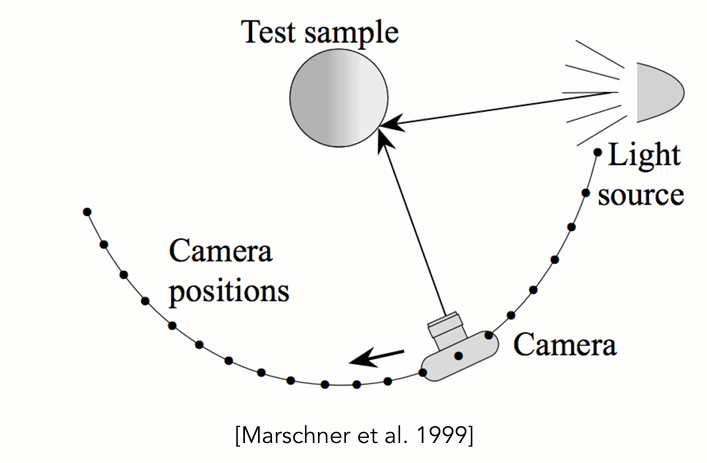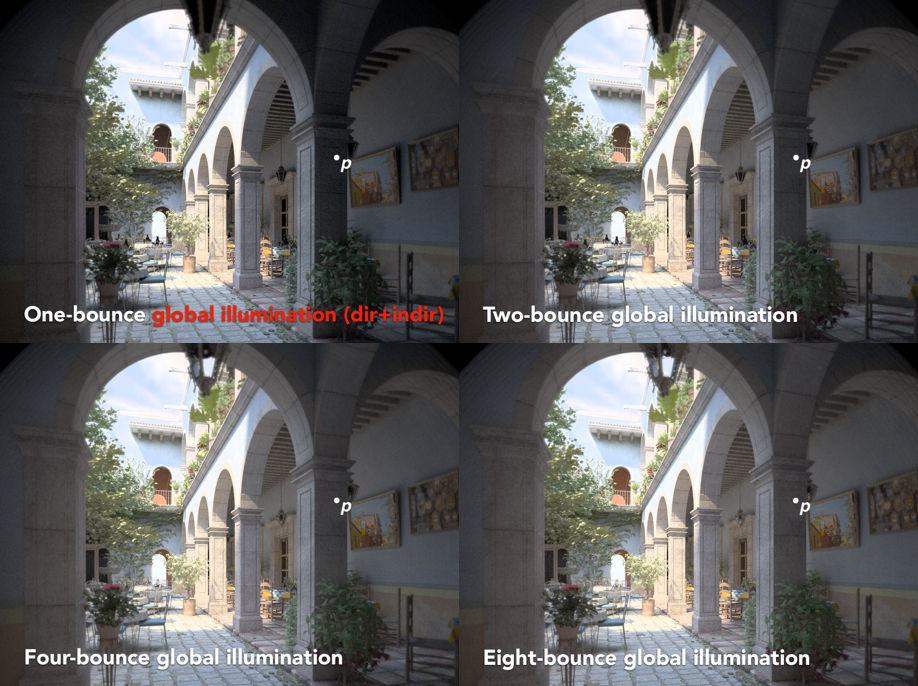渲染方程¶
前置内容为 辐射度量学与光度学。
Reflection at a Point¶
Radiance from direction \(\omega_i\) turns into the power \(E(\omega_i)\) that \(\mathrm{d}A\) receives. Then power \(E(\omega_i)\) will become the radiance to any other direction \(\omega_r\).
- Differential irradiance incoming: \(\mathrm{d}E(\omega_i)=L_i(\omega_i) \cos \theta_i \mathrm{d} \omega_i\)
- Differential radiance exiting due to \(\mathrm{d}E(\omega_i)\): \(\mathrm{d}L_r(\omega_r)\)
BRDF¶
The Bidirectional Reflectance Distribution Function (BRDF) represents how much light is reflected into each outgoing direction \(\omega_r\) from each incoming direction.
The unit is \(sr^{-1}\)。
这是一个以 立体角 为自变量的函数,画出来通常是气球形状的,类似极坐标里的一些函数。
Properties¶
-
Non-negativity
\[ f_r(\omega_i \rightarrow \omega_r) \ge 0 \] -
Linearity
-
Reciprocity principle
\[ f_r(\omega_r \rightarrow \omega_i)=f_r(\omega_i \rightarrow \omega_r) \] -
Energy conservation
\[ \forall \omega_r \quad \int_{H^2} f_r(\omega_i \rightarrow \omega_r) \cos \theta_i \mathrm{d} \omega_i \le 1 \] -
If isotropic
\[ f_r(\omega_i \rightarrow \omega_r)=f_r(\theta_i,\phi_i;\theta_r,\phi_r)=f_r(\theta_i,\theta_r,|\phi_r-\phi_i|) \]各向同性(Isotropic)时,比各向异性(Anisotropic)少一个维度。
Measurement¶
foreach outgoing direction wo
move light to illuminate surface with a thin beam from wo
for each incoming direction wi
move sensor to be at direction wi from surface
measure incident radiance
Improving efficiency:
- Isotropic surfaces reduce dimensionality from 4D to 3D
- Reciprocity reduces the number of measurements by half
- Clever optical systems...
The Reflection Equation¶
The Rendering Equation¶
Kajiya 提出 The Rendering Equation,就是自发光 + 反射光。
其中 \(n \cdot \omega_i = \cos \theta_i\)。
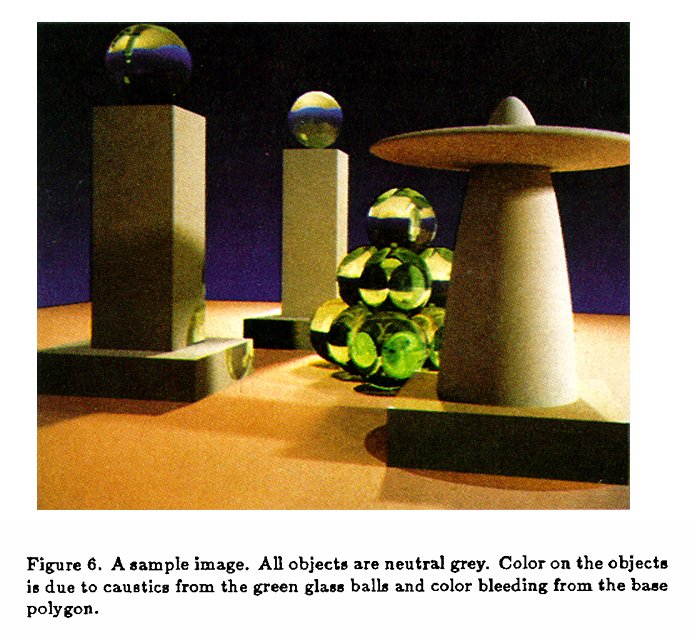
Ray Tracing¶
渲染方程中,未知的量只有 \(L_o(p, \omega_o)\) 和 \(L_i(p,\omega_i)\),但某一点的 \(L_i(p,\omega_i)\) 又依赖其他点的 \(L_o(p, \omega_o)\),形成了递归。积分是线性运算,如果用某个线性算子 \(K\) 改写渲染方程,能得到
可以把 \(K\) 看作某种变换矩阵,解得
对 \((I-K)^{-1}\) 用二项式定理,或者类似 \(\dfrac{1}{1-x}\) 的泰勒展开得到
| 项 | 意义 |
|---|---|
| \(E\) | Emission directly From light sources |
| \(KE\) | Direct illumination on surfaces |
| \(K^2E\) | One bounce indirect illumination, e.g., Mirrors, Refraction |
| \(K^3E\) | Two bounce indirect illumination |
| \(\cdots\) | \(\cdots\) |
光栅化渲染中,前两项比较容易,后面的项就困难了。后来,提出 光线追踪 来解决这个问题。
后面的项计算一定数量后就差不多收敛了,再计算差别也不大了。

